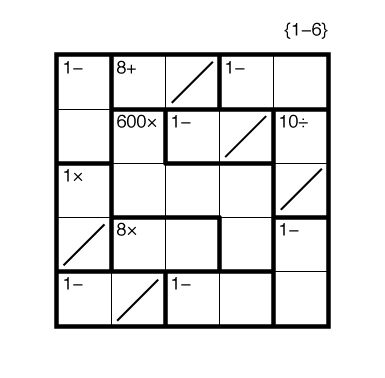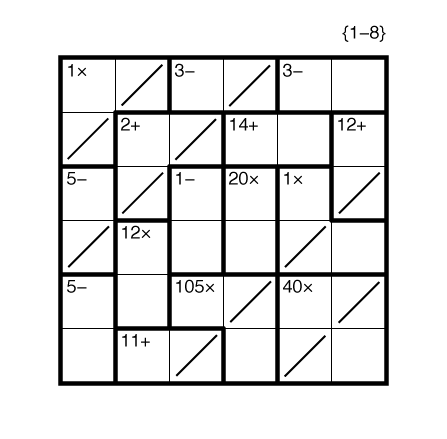Championship Chatter – That New Tom/Tom Craze
While I still want to find a good name for this variation of TomTom (Tight Fit TomTom matches the genesis story well but is probably not the best name for longevity), it was a style idea that strongly encouraged me to write for the USPC this year as it seemed a great place to debut it.
The idea actually came from Craig Kasper during a discussion of puzzle styles and possible variations. Craig didn’t think he could do it justice, but he offered it to me and I knew instantly it was a great concept to save for the future — with the USPC as the obvious first destination if it could work. I wrote two Tom/Tom puzzles (also probably not the best name — maybe in the comments people can recommend others?). The first was an easy one (10 pointer?) that became the example. The second was a tougher puzzle that has been called undervalued for 20 points by most people commenting on it. Perhaps the break-ins were not as easy to find?
The biggest struggle with the style was how to format it well; you’ll find that both of these puzzles use slashes in cells that would not normally contain the clue digit to leave more space in the fractional cells for writing numbers. Palmer’s pre-USPC example uses shaded cells and this might be a more productive route going forward. I have plans to make a bunch of TomTom variety books/puzzle packs focused on different math concepts and will probably make one around this variation when I get some larger tasks off my plate. Removing some of the extra trickiness of these samples and having simpler fractional values and even fractional clue targets should make this a good extension of TomTom puzzles for education purposes. I can even turn single cell cages into non-trivial entries!
I hope you enjoyed this variation as much as I enjoyed making it work.

or solve online (using our beta test of Penpa-Edit tools; use tab to alternate between “big” sudoku and “small” number entry modes.)

or solve online (using our beta test of Penpa-Edit tools; use tab to alternate between “big” sudoku and “small” number entry modes.)
Theme: Cage geometries, and the logic of the solve and new fraction rules primarily
Rules: Variation of standard TomTom rules. The indicated ranges are larger than N x N (1-6 and 1-8 respectively), and some cells containing slashes require two digits to be placed. These cells should be treated as fractional values (top value over bottom value) for the purposes of solving the puzzle.
Answer String: For the USPC, the answer string was the 5th row and 5th column of the larger puzzle. For this week, you can just hit the solved button on an honor system if you think you’ve solved it.

The shaded square I used was just a quick fix because my drawing tools did not have a slash available, and I didn’t want to spend USPC practice time hacking it in. I find the presentation with the slash far superior.
The specific challenge is a square with a slash and, say, a 10+ in the upper-left will not have much space for the numerator to go in. Perhaps a more horizontal or compressed slash can work too when a clue has to be in the same square.
I loved this variant. The tight-fit squares turning into fractions is such a natural change, and adds a lot of variety to the TomTom deduction process. This was probably my favorite puzzle on the test. I thought it was hard, but it didn’t seem dramatically harder than other comparably scored puzzles.
As I’ve already mentioned elsewhere, I love this variant for itself and for the math education possibilities. I hadn’t thought about the single-cell clues becoming interesting — that’s an extra bonus, and especially important for school as well (a fraction can be equal to an integer! Amazingly hard for some students to get used to that idea.)
I’m at a workshop this week, teaching teachers how to organize workshops in their hometowns where they will teach teachers mathematics, so I’m going to print and share these with a few friends and colleagues here! I also gave one of them Bram’s recent “Factory Killer Sudoku”, which is a lot of fun, and showed around some of the more elegant Arrow puzzles too.
I enjoyed both of these Tom/Tom puzzles (FracFrac puzzles? TomFracKu, just to annoy you with a horrible suggestion that leapt to mind … Tom/Ken puzzles, since it is after all Tom over Ken, perhaps?) a lot, and I probably solved it about on pace for 20 points but this probably “should” be a variant where I’d gain ground on a lot of other solvers (like on the card kakuro which came out in about half the time I would have guessed from the point value), so I agree that it was a bit undervalued for its difficulty.
Also at the moment the fave/solved buttons don’t seem to be showing up.
I liked the puzzle a lot, but disliked the fact that I had to restart it, twice. I would definitely want to see more of this variant, as there are many new kinds of deductions that can be made.
The solve button isn’t showing up for me as well, and The Griddle is up.
I’m in the process of changing web hosts and doing other changes in the site’s code/caching so this week you may encounter some instability like the fave/solved buttons disappearing. We’ve had some serious memory leaks and connectivity problems over the last month so I’m hoping to purge them all soon.
I broke the example very quickly several times in the night before the contest because my mind wasn’t quite grasping all the new possibilities yet, so I didn’t spend much time looking at this during the test.
Just a note — in the PDF for the top one, the lower-left “1x” cell is only marked “1”, which leads to two solutions.
Both PDFs load for me with all operations included. The PNGs are made directly from the pdf files always so it would be unusual to see anything missing from the pdf that is in the posted image.
Can you share the pdf viewer you are using? Not that I’ll be able to replicate the problem but I’d like to track it down further and see if it is font specific or something else.
It’s the one built into Firefox, which is somewhat experimental, I think? If I download the PDF and view it standalone, the x is indeed there. 🙂
As for the name, how about FracTom?